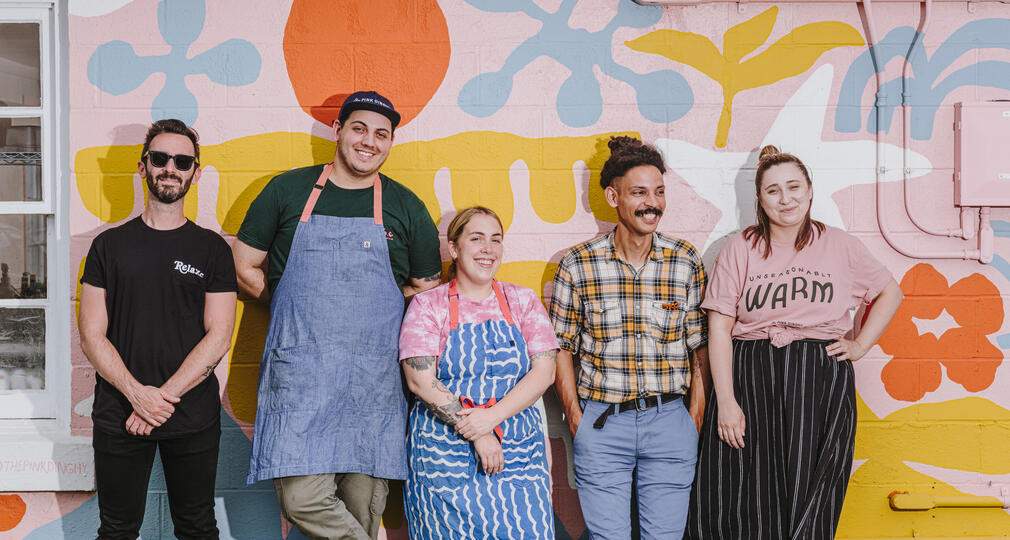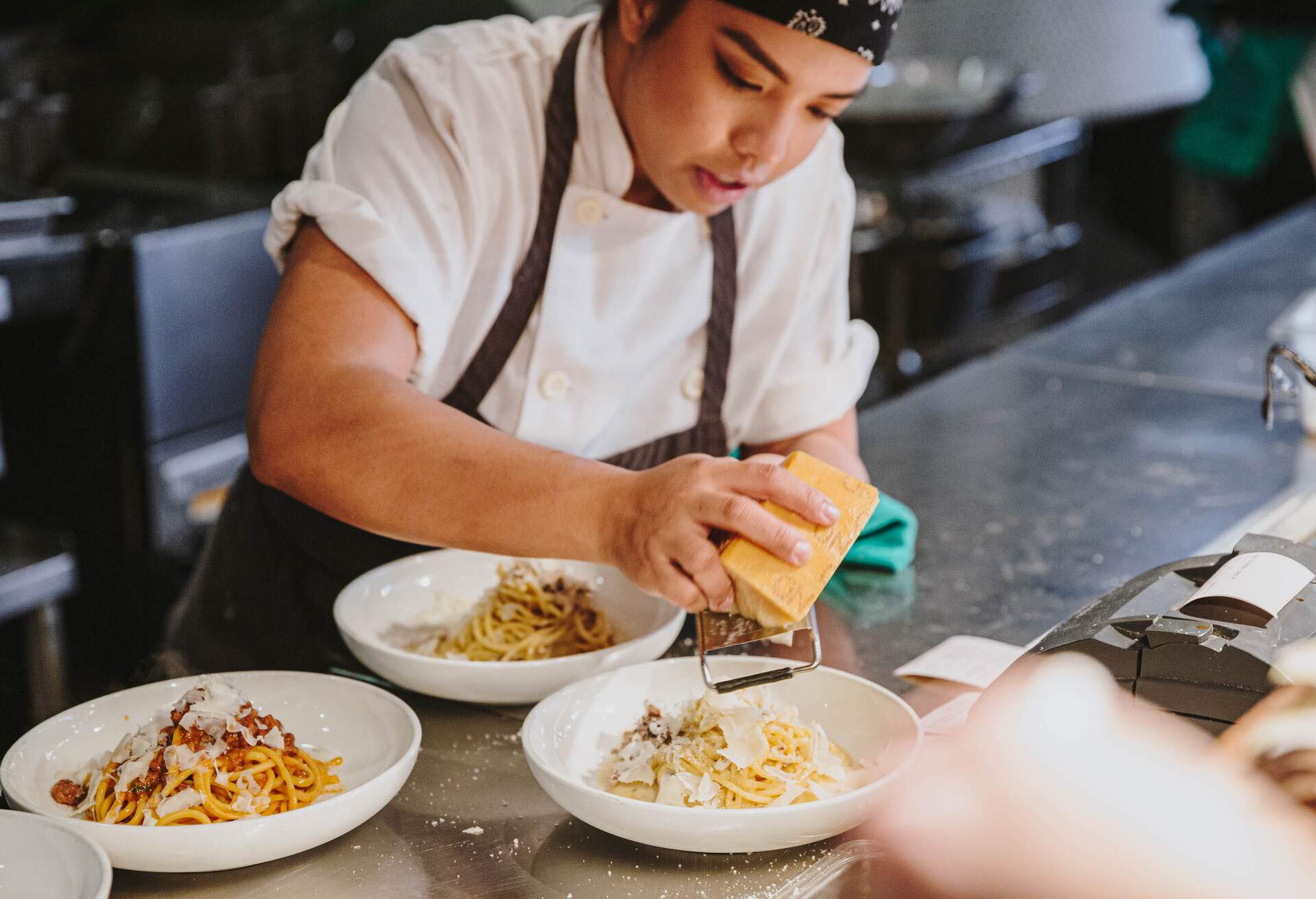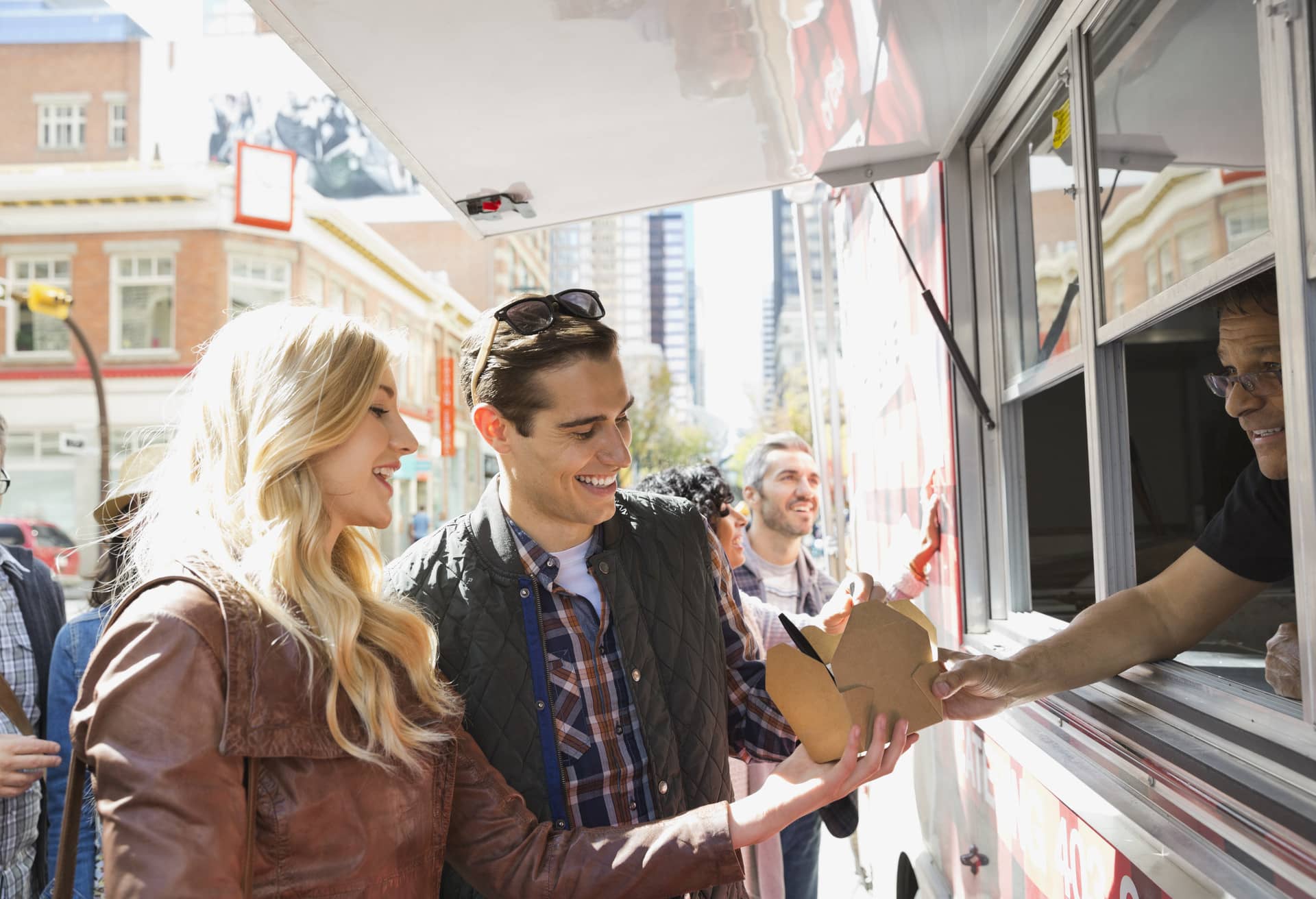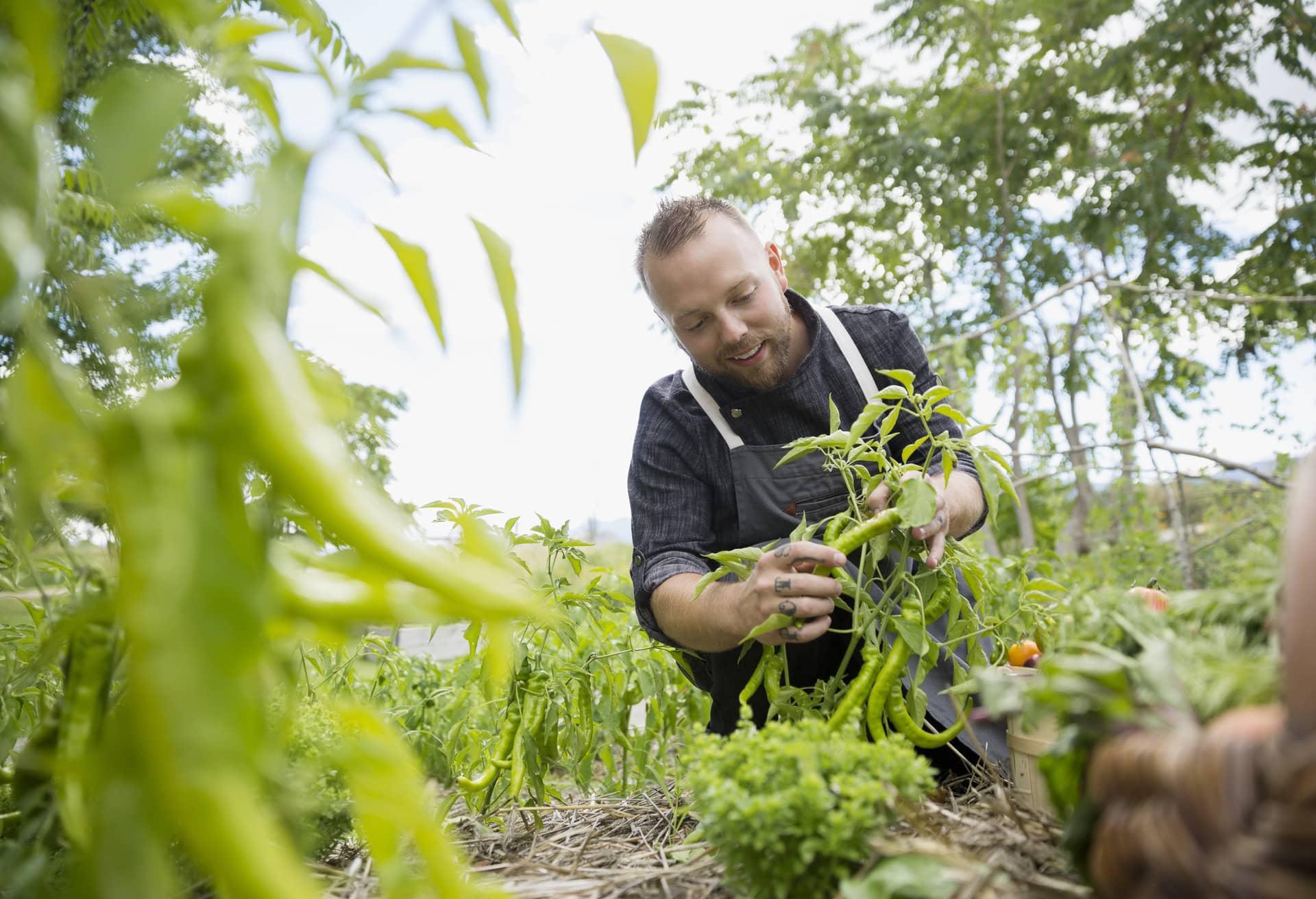In a restaurant kitchen, efficiency is everything. As restaurant groups grow and one concept turns into five — and additional business opportunities come into the mix — time and space are of the essence. That’s when a commercial kitchen starts to make sense for production.
As the founder of Seattle’s Skillet Street Food and Huxley Wallace Collective, Chef Josh Henderson oversees full-service restaurants, food trucks, and a catering operation and uses a commercial kitchen to streamline prep. Adam Chapman, the GM at Oakland’s Plum Bar, has made the restaurant into a cocktail kitchen space for the entire Daniel Patterson Group.
We talked to Josh and Adam about their production, operations and staffing to learn some best practices for utilising a commercial kitchen. Here are 10 ways to make it work for you.
What is a commercial kitchen
Commercial kitchens, also known as commissary kitchens or ghost kitchens, are professional kitchen spots equipped to produce large volumes of food for other restaurant businesses, food trucks, hotels, bars and other hospitality businesses.
As the founder of Seattle’s Skillet Street Food and Huxley Wallace Collective, Chef Josh Henderson oversees full-service restaurants, food trucks, and a catering operation and uses a commercial kitchen to streamline prep. Adam Chapman, the GM at Oakland’s Plum Bar, has made the restaurant into a cocktail kitchen space for the entire Daniel Patterson Group.
We talked to Josh and Adam about their production, operations and staffing to learn some best practices for utilising a commercial kitchen. Here are 10 ways to make it work for you.
How to set up a commercial kitchen
1. Use the space as much and as often as you can
“Look at it like a manufacturing facility — every hour of the day you should be at maximum capacity,” says Josh.
That’s impossible to do in a restaurant or a commercial kitchen, but if you’re resourceful you can find a way to combine the two. Josh’s first commercial kitchen was part of a building that also had a café. If you can create a restaurant and a commercial kitchen out of the same space, the spaces begin to make sense from a financial and efficiency standpoint.
If you’re just starting out and low on cash, find someone to rent out your commercial kitchen space while you’re not using it, such as a baker who can make bread at night.
“In most restaurants, your occupancy cost or rent needs to occupy a certain percentage,” Josh explains. “Most people like to stay in the 5-7% range of your revenue. If you can do that as well as have a commercial kitchen and make even more revenue? You’re doing really well.”
2. Prep everything before service
Restaurants in the Daniel Patterson Group, such as Plum Bar and Alta, are open all day. Bartenders were prepping ingredients in the afternoon, while people were sitting in front of them trying to order drinks. “The kitchens would fail on a daily basis run like that,” says Adam.
He needed to streamline operations so that service would run smoothly and bartenders wouldn’t have to prep in front of guests. “Everything that goes wrong or takes time in the middle of service, we try to do during the day when it’s behind the scenes.”
3. Make the most of your staff’s time and talents
Adam noticed the bartenders within the restaurant group were spending a significant amount of time every day prepping mise en place for the bar. By centralising cocktail production in a commercial kitchen, he was able to have bartenders come in later.
“We had somebody that’s a bartender who’s talented, trained, coming in and juicing things,” he says. “Not that that’s beneath them, but there are other things for them to do. It’s the same thing in the kitchen: you don’t have a sous chef peeling potatoes all the time.””
He redesigned the bar to be set up like a kitchen, with rolling production and a predictable, organised mise en place in place for bartenders when they arrive. That allowed him to cover all the basics of running bar so he and his team could focus on the next step.

4. Give your staff more tools and resources to innovate
At Huxley Wallace, Josh aims to use his commercial kitchen as a lab for baking, and to generally expand the ability of what he’s able to do at the restaurants. It’s all about taking the products to the next level.
The same goes for the Daniel Patterson Group, where Adam has set the team up for a new level of cocktail programs. He works with the bar teams at the restaurants to come up with new drinks and garnishes, then batches special liqueurs and sodas for them to use. Instead of thinking about basics like lemon juice, their conversations revolve around new drink innovations. They R&D drinks, such as a rose liqueur steeped with strawberries, bottle it, and give it to the teams to come up with drinks.
“It’s a lot of work but it’s a lot easier, too, because we’re able to do some really fun things easily. We don’t take away creativity from our bartenders, we raise the level of conversation of what that creativity could be.”
5. Reorganise your staff to provide new, unique opportunities
At Plum Bar, three people are focused strictly on the beverage side of the business. One used to be a prep cook for the kitchen, but since Adam didn’t need someone full time he’s now doing a bit of both front of house and back of house. Another is a talented bartender who wanted to do more, and is now producing liqueurs and bitters in-house. The third is a chef who’s now overseeing the entire program.
The key, Adam says, is changing how you staff — not just hiring a new person, but really restructuring the organisation. Doing so has actually allowed him to retain more staff, because they are working on larger, more strategic projects that offer more opportunity.
6. Set yourself up to grow your business
At the moment, the Plum Bar team is making barrel-aged cocktails, liqueurs and spirits for the group’s other restaurants. Adam has set them up to keep expanding production and even distribution beyond the restaurants as they continue to grow.
Similarly, Josh’s commercial kitchen has helped grow his catering business. He has a chef who is dedicated solely to running the commercial kitchen and catering, as well as Skillet Street Food.
7. Control the quality of your food and beverages across concepts
A commercial kitchen isn’t necessarily a cost saving. In fact, Josh says it may be slightly more expensive to operate this way, but it gives him more control and allows his team to be more efficient. The cocktail kitchen space at Plum Bar has saved Adam’s team money, but that’s still not his primary goal.
“I know the quality will be better,” says Josh. “The morale and sanity will be a little bit better. And it just makes a more pleasant environment where you’re not trying to figure out where you’re going to put these six tubs of potato chips stacked above the walk-in for service on Friday night, and you’re also prepping for Saturday. Things should be a little easier than that.”
Adam adds that it’s easier to oversee the quality of production when things are centralised, not spread out over multiple locations.

8. Organise your ordering and delivery systems
Producing food and drinks in a different location adds a new layer of operational complexity with orders and deliveries. It’s important to consider issues that might come up along the way (for example, if you’re delivering food, you may need refrigeration in your vehicles.) Both Josh and Adam have systems in place to deliver product from the commercial kitchen to the restaurants; Josh’s are daily, while Adam’s are twice a week.
Adam has developed a sophisticated way to deal with the ordering process. His team started out using a Google doc to place orders, but now he’s building out a website and app so restaurants can go in, open their accounts, and add items to their cart. The team receives a notification that the order has been placed and can prepare deliveries accordingly.
9. Give yourself more space for storage
For Josh, one of the biggest advantages of a commercial kitchen is the extra space, particularly for cold storage.
“It’s not always the prep time, it’s, where do you put everything that you’ve prepped? That’s the other efficiency of a commercial kitchen: it allows you to store things until you need it. If you can deliver things to a restaurant already done, and all they’re doing is unwrapping it and it’s ready to go, then that’s an efficiency.”
If you’re outgrowing your space and literally can’t close the doors of your walk-in during August, it may be time to start considering a commercial kitchen.
10. Know what to expect from your business model
We asked Josh if there are any big differences between operating a commercial kitchen for food trucks and using one just for restaurants. What changes, he explained, is the cadence and frequency of your prep. While restaurants are fairly consistent — you’re making a certain amount of everything every day — street food and catering get massive hits, when you’ll be producing 1,000 burgers in a day for an event.
To set yourself up for success, understand the unique needs of your business model and create a space that supports those needs. Know if and when you’ll need space for extra people or extra storage, and prepare accordingly.”




